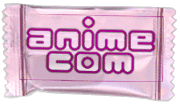|
Article by Karen Gellender
Frilly dresses, glittering swirls of light, cute-as-a-button talking animals — these are the things that come to mind at the mention of magical girls. For many examples of the genre, this is accurate, but it wasn't always thus. The magical girl genre, which debuted with Sally The Witch before the days of color TV, took a while to achieve the form we now know so well, and fans might be surprised to learn that its plots were not always magical, or even about--or intended for--girls. The image of a ballerina-esque magical girl dancing and fighting her foes with pink rays of magic may be our go-to image, but it's probably fair to say that the genre has more breadth and complexity than we often give it credit for.

Sally the Witch, 1966
Most agree that the first magical girl anime to hit the airwaves was Sally the Witch in 1966, heavily inspired by Bewitched, a big hit in Japan at the time. Just as pretty Samantha Stevens would twitch her nose to perform a spell, accompanied by a tinkling sound effect, Sally would give a flirtatious little wink, and the opening sequence is especially reminiscent of the American sitcom. Sally, the magical girl prototype, was benevolent, sweet, and mainly used her powers to help her friends; the girls that followed her during this era were largely the same.
What's interesting about Sally The Witch for today's viewer is how little it resembles not only later magical girl shows, but anime in general. With a main character that looks like a cross between Little Orphan Annie and Betty Boop, the show feels more like a cartoon that happens to be in Japanese than what we think of as anime, as a lot of the defining characteristics of the medium had yet to emerge. However, that changed relatively quickly, as the next genre-defining show — Majokko Megu-chan in 1974 —feels surprisingly modern.

The Majokko Megu-chan manga
 More prickly than Sally and her ilk, Megu-chan had to deal with losing, genuinely evil bad guys, and a disturbing amount of people who wanted her to take off her clothes. Megu was frequently shown in her bra and panties, and she ended up in compromising situations as often as not. Love it or hate it, the age of fanservice, or unnecessary nudity, had arrived. To be fair to Megu-chan, her show is much more watchable today than the '60s incarnation of magical girls, and dealt with some surprisingly dark themes, even suicide. The show may have been exploitative to a degree, but it proved not only that magical girl shows didn't have to be innocuous fluff, but that boys (and men) were willing to watch them. More prickly than Sally and her ilk, Megu-chan had to deal with losing, genuinely evil bad guys, and a disturbing amount of people who wanted her to take off her clothes. Megu was frequently shown in her bra and panties, and she ended up in compromising situations as often as not. Love it or hate it, the age of fanservice, or unnecessary nudity, had arrived. To be fair to Megu-chan, her show is much more watchable today than the '60s incarnation of magical girls, and dealt with some surprisingly dark themes, even suicide. The show may have been exploitative to a degree, but it proved not only that magical girl shows didn't have to be innocuous fluff, but that boys (and men) were willing to watch them.

Cutie Honey, 1973
Contemporary with Megu-chan was Cutie Honey (1973), viewed today as the progenitor of all magical girl transformation sequences. Cutie Honey was originally going to be targeted at girls, but like Megu-chan, the main character's nudity was used to draw in male viewers. A switch in time-slots to a time that had previously shown male-targeted shows like Devilman urged creator Go Nagai to make Honey less of a magical girl show and more action oriented, with a main character who was frequently nude whenever she transformed. Critics of modern anime often complain that the magical girl show has been coopted to appeal to men instead of little girls, but when we look at the history of the genre, it's clear this has been going on for a long time--for better and for worse.

The Magical Princess Minky Momo Roman Album (The Roman Albums were a series of collector books aimed at anime fans)
 Still, there were plenty of relatively innocent shows that were primarily targeted at young girls. Magical Princess Minky Momo (1982) featured a sweet protagonist, not unlike Sally, who was a witch-in-training. The show pioneered the use of adorable talking animal sidekicks, which soon became ubiquitous, since writers recognized a great idea when they saw it. Otherwise, the '80s were dominated by the magical girl anime of Studio Pierrot, which varied in tone in subject matter, but all shared a similar style. The most significant of the bunch was Magical Angel Creamy Mami (1983), the first anime to feature the "magical singing idol" magical girl. Magical Idols, or magical girls that frequently sing (either to defeat their enemies, as professional pop stars, or all of the above) became extremely popular, as many later examples —including Fancy Lala, Mermaid Melody Pitchi Pitchi Pitch, and Full Moon O Sagashite— attest. Even magical girl shows that don't feature idol protagonists (like Sailor Moon) often feature idol subplots, thanks to Creamy Mami. Still, there were plenty of relatively innocent shows that were primarily targeted at young girls. Magical Princess Minky Momo (1982) featured a sweet protagonist, not unlike Sally, who was a witch-in-training. The show pioneered the use of adorable talking animal sidekicks, which soon became ubiquitous, since writers recognized a great idea when they saw it. Otherwise, the '80s were dominated by the magical girl anime of Studio Pierrot, which varied in tone in subject matter, but all shared a similar style. The most significant of the bunch was Magical Angel Creamy Mami (1983), the first anime to feature the "magical singing idol" magical girl. Magical Idols, or magical girls that frequently sing (either to defeat their enemies, as professional pop stars, or all of the above) became extremely popular, as many later examples —including Fancy Lala, Mermaid Melody Pitchi Pitchi Pitch, and Full Moon O Sagashite— attest. Even magical girl shows that don't feature idol protagonists (like Sailor Moon) often feature idol subplots, thanks to Creamy Mami.

Magical Angel Creamy Mami, and yes this is from the 80s! You can tell by the pastel colors
The show was also one of the first to promote a real-life idol singer, in this case Takaka Ohta, who performed all of Creamy Mami's songs, including the opening theme. While not every magical girl show promotes idols, using professional singers to voice magical girls and sing their songs either on screen, or on bonus soundtracks and other materials, became a genre staple.

Sailor Moon (as if we had to tell you)
Speaking of genre codifiers, people often credit Sailor Moon (1992) with introducing the first magical girl team, but that's not quite true; in fact, Creamy Mami and her friends were there first. Adesugata Mahou no Sannin Musume (1987) featured all of the Studio Pierrot heroines to date- Creamy Mami, Persia, Magical Emi, and Pastel Yumi--teaming up in a crossover. What Sailor Moon did introduce was the concept of the warrior-girl team, taking influence from male-targeted "Super-Sentai" shows, known for their over-the-top action and posturing. Instead of using their powers to help friends, the Sailor Senshi were warriors first, protecting Tokyo (technically the Earth, but mostly Tokyo) from all manner of inter-galactic threats. The show was a massive hit, going on to span 200 episodes, three movies, many stage musicals, and years later, a live action series. In addition to paving the way for more action-oriented shows throughout the'90s like Magic Knight Rayearth, Sailor Moon was one of the first anime to achieve massive popularity in the west, introducing a generation of fans outside of Japan not only to magical girls, but anime in general.

Revolutionary Girl Utena, 1997
By the late '90s, magical girls had been around long enough that creators were inclined to deconstruct the genre and try new things. Revolutionary Girl Utena (1997) was famous for this, to the point where many would debate classifying it as a magical girl show, but more typical examples of the genre began to do this in a more subtle way. Card Captor Sakura, the genre's biggest hit after Sailor Moon, seemed like a typical magical girl show, if an extremely well-animated and polished one, but there was more going on under the surface: instead of transforming, Sakura wore outfits specially created by her friend Tomoyo, who also filmed Sakura while she was fighting, much to Sakura's dismay. Tomoyo's glee at dressing up and filming Sakura cleverly, though gently, poked at the voyeurism that seemed to be inherent in the genre.

Card Captor Sakura
CCS also featured gay and lesbian relationships including Tomoyo's unrequited love for Sakura and Sakura's brother Toya's mutual love for his friend Yukito. This, after Sailor Moon's sympathetic depiction of a lesbian couple (Sailors Uranus and Neptune) and the gender-swapping Sailor Starlights, contributed to a view of the genre as particularly LGBT-friendly, something that continues to this day. Another 90s trend that persevered, pioneered by Tenchi Muyo's Pretty Sammy, was non-magical girl shows spinning off popular female characters into their own magical girl stories; for a recent example, check out what's going on with Rin and Ilya in Fate/Stay Night these days.

Shugo-Chara
Post-millennium, the genre went in a few different directions. More traditional magical girl shows like Shugo-Chara remained available, while the massively popular Pretty Cure series took the torch from Sailor Moon, featuring teams of magical girls sometimes working at cross-purposes. However, increasingly, genre elements began to appear in shows that weren't, strictly speaking, magical girl shows. After Love Hina, the popularity of so-called "harem" anime exploded, featuring tons of attractive females vying for the attentions of the male protagonist. Often, the potential girlfriends had magical powers, leading to shows like Rosario +Vampire, where, though not a magical girl show, practically every female character meets the criteria of a magical girl. Now, there's the question of are-they-or-aren't-they-magical-girl-shows: shows with magical females, but the females either aren't the protagonists, or the show differs from the formula in some other significant way. For this reason, which shows fall under the magical girl banner these days probably depends on who you ask.
Circling back to the criticism of magical girl anime being co-opted by men, some shows, like Magical Girl Lyrical Nanoha, seem to be designed with hardcore otaku in mind with scant interest in attracting little girls as viewers. However, this isn't necessarily a bad thing; the most critically acclaimed magical girl show in years (and arguably, ever) Puella Magi Madoka Magica (2011), came about as a result of this trend. Mercilessly dark and gloomy, with existential themes targeted way above the heads of most children, Madoka did for the magical girl show what Neon Genesis Evangelion did for the giant robot show fifteen years earlier: proved that there was a lot creative potential left in a genre that some may have felt was getting stale after decades of use.

Puella Magi Madoka Magica
That brings us up to today, which seems like a pretty good time to be a magical girl fan. We are just now beginning to see the wave of shows that were influenced by Madoka's genre-busting exploits, Pretty Cure is a behemoth with no signs of slowing down, and Sailor Moon is poised to make a triumphant return to the airwaves this summer. Will the first magical girl show to make waves in the west return more or less as we remember it, or go the deconstruction route-- asking questions about what made the original show such a blockbuster in the first place? We'll have to wait and see, but in the meantime, there's plenty of current magical girls to watch, and plenty of oldies-but-goodies to catch up on. If you're a fan and you've yet to give classics like Creamy Mami and Minky Momo a watch, give them a try; it's a fascinating history lesson, and you just may find yourself addicted to the humbler, but refreshingly gentle, magical girl shows of yesteryear.
|
|
|
 |
|
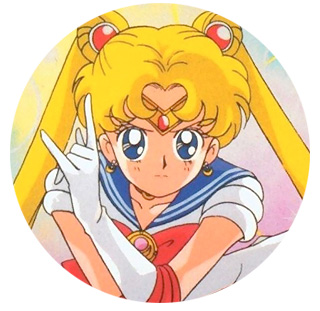
Bonus Feature: Some of Our Favorite Sailor Moon Toys!
Here they are, because you grew up with them!
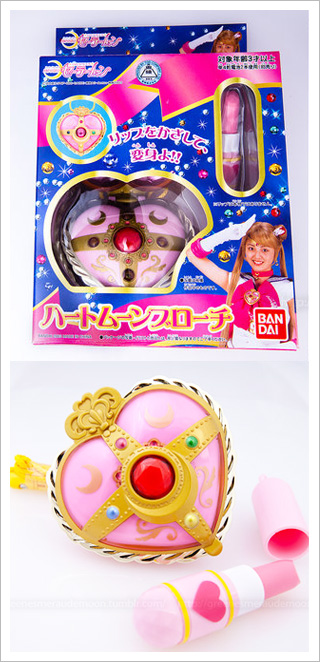
PGSM Locket Sailor Moon Compact — source.
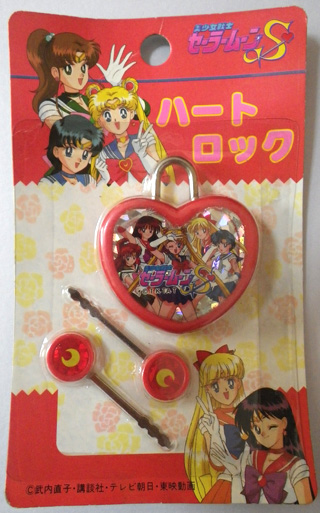
Sailor Moon S Toy Heart Rock — source.

Kaiyodo 1/4 Pretty Soldier Sailor Moon Tsukino Usagi Statue 15" Model Figure — source.

Sailor Moon SuperS Stallion Reve by Bandai — source.
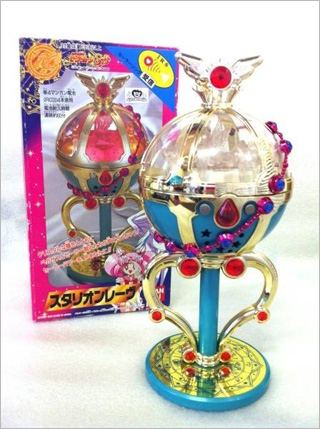
Sailor Moon Pegasus Stallion Reve — source.
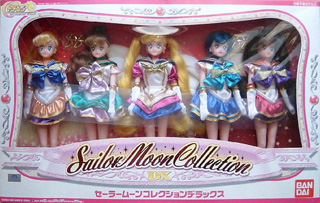
Sailor Moon Musical Doll Figure Collection — source.
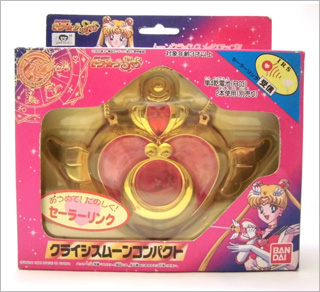
Sailor Moon SUPER S SS Crisis Moon Compact by Bandai made in 1995 — source.

Sailor Moon World Mini Collection DX Part 1 Doll Figure Set — source.
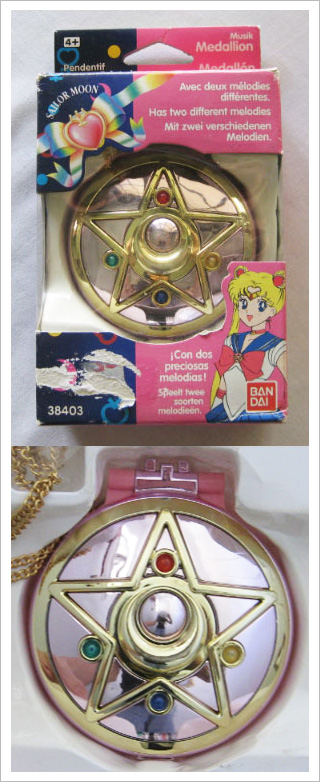
Sailor Moon Bandai Transformation Brooch Compact Music Box Locket R Pink Star — source.
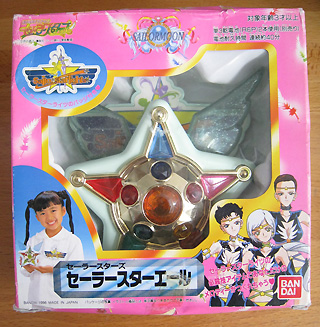
Sailor Moon Starlight Star Fighter Maker Healer Star Yell by Bandai — source.

Sailor Moon Usagi Tsukino Voice Figure Doll made by Bandai, 1994 — source.
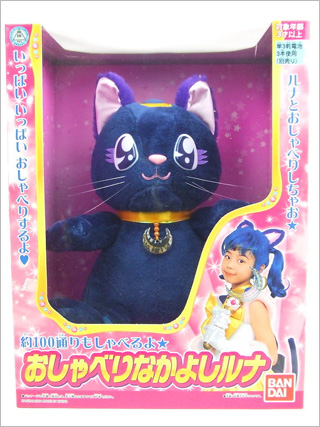
Sailor Moon Talking Luna Plush figure — source.
|
|
|
